Black Friday Cyber Monday (BFCM) presents a paradox. While shoppers spent a record-breaking $38 billion online over the 2024 holiday weekend, the analysis of merchant performance reveals a sobering truth: a staggering 87% of BFCM merchants fail to retain their new customers - why most Black Friday shoppers never come back.
This is not a failure of sales volume, but a failure of strategy and profitability. Most are caught in a "BFCM sugar rush"—a temporary revenue spike that masks the harsh reality of unsustainable customer acquisition costs, eroded margins, and dismal repeat purchase rates. The fundamental problem is a widespread obsession with acquisition over retention, a financially broken model.
This analysis, based on our firsthand experience working with thousands of Shopify merchants, dissects the flawed economics of the traditional BFCM approach and provides a comprehensive blueprint for transforming the event from a costly gamble into a powerful engine for building lasting customer relationships and sustainable, profitable growth.
Key Strategic Takeaways:
- Profitability over Volume: Success is measured by margin and customer lifetime value, not just gross revenue.
- Retention is the Engine: The high cost of BFCM acquisition makes post-purchase retention non-negotiable for achieving positive ROI.
- Data-Driven Personalization Wins: Generic, site-wide discounts are a losing strategy. The merchants who succeed use customer data to create targeted, margin-protecting offers.
- BFCM is a Beginning, Not an End: The event should be treated as the start of a new customer relationship, not the end of a transaction.
The Flawed Unit Economics of a Traditional BFCM
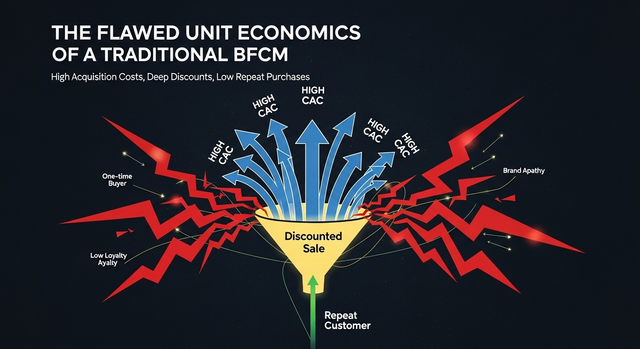
The most critical error merchants make is prioritizing new customer acquisition at any cost. This strategy is fundamentally unsustainable. Foundational business research shows it can cost anywhere from 5 to 25 times more to acquire a new customer than to retain an existing one. During BFCM's hyper-competitive environment, this cost skyrockets.
During BFCM 2024, the unit economics became brutally clear:
- Skyrocketing Customer Acquisition Cost (CAC): Ad costs on major platforms soared by over 30%, making paid acquisition intensely unprofitable for many.
- Deep Margin Erosion: Average discount rates hit 21%, more than double the yearly average of 9%.
- Low Customer Lifetime Value (CLV): A mere 13% of BFCM shoppers returned for a second purchase, meaning the vast majority were one-time, low-margin buyers.
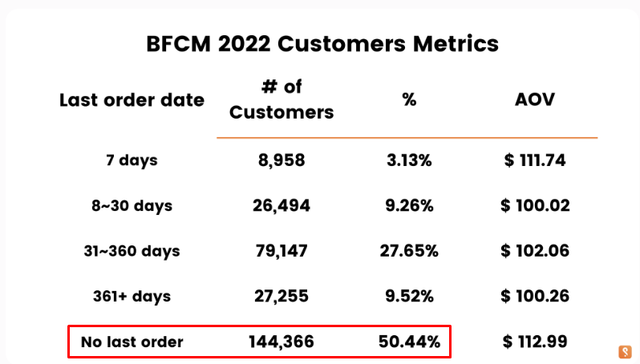
When you combine high CAC with deep discounts for customers who will not return, the equation results in a negative ROI. The strategy isn't just inefficient; it's a direct path to unprofitable growth.
The Seven Deadly Sins of BFCM
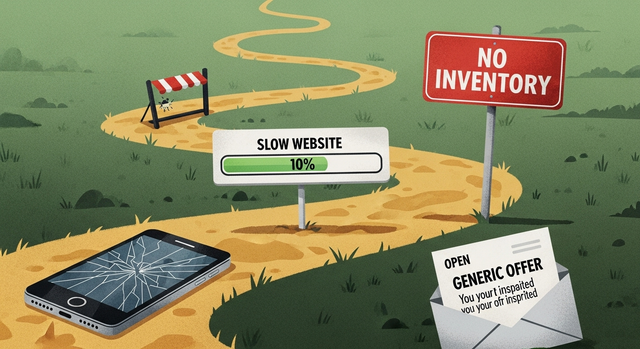
These common mistakes are symptoms of a misaligned, acquisition-first strategy. Recognizing them is the first step toward building a more resilient, retention-driven approach.
1. Strategic Suicide: The Perils of Blanket Discounting
Offering deep, site-wide discounts is a race to the bottom that destroys profit margins and trains customers to only buy on sale. Instead of indiscriminate cuts, a retention-focused strategy deploys margin-protecting rewards, like exclusive access for top-tier members or "buy more, get more" offers that increase AOV.
2. Failing the Mobile Mandate: A Friction-Filled Experience
While mobile shopping accounted for over 70% of all online traffic during BFCM, desktop conversion rates remained higher. This points to a critical failure in optimizing the end-to-end mobile journey. A true mobile-first design considers every touchpoint, from the loyalty program UI to a seamless, one-click checkout.
3. The High Cost of Poor Forecasting
Inaccurate demand forecasting creates two expensive problems: frustrating stockouts that kill sales or costly overstocking that forces deeper markdowns post-holiday. Merchants using sophisticated data strategies see 40% better inventory turnover. A loyalty program provides rich first-party data on your most predictable customers, enabling far more accurate forecasting.
4. Competing in the Red Ocean: The Folly of Last-Minute Marketing
Launching campaigns on BFCM weekend means entering a "red ocean" of intense competition. Strategic merchants, with experts advising to start planning as early as August, create their own "blue ocean" by launching early with a VIP early access campaign for loyalty members.
5. Technical Debt Comes Due: When Your Site Becomes a Liability
A website that crashes or slows under peak traffic is a direct loss of revenue and brand trust. Ensuring your site and all third-party apps are built on an enterprise-grade infrastructure is non-negotiable.
6. The Transaction Trap: Ignoring the Customer Journey's Most Critical Phase
The post-purchase period is where retention is either won or lost. With only 13% of BFCM shoppers returning, a robust post-purchase engagement strategy—focused on onboarding new members into your loyalty program—is critical.
7. The Anonymity Epidemic: Treating Every Customer the Same
Sending generic offers is profoundly inefficient. A customer relationship platform transforms anonymous transactions into unified profiles, allowing you to create personalized rewards that resonate and convert.
The Superior Economics of a Retention-Driven BFCM
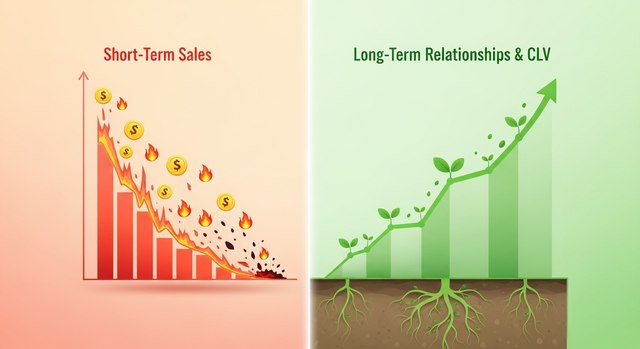
The contrast between the two models is stark. A retention-driven strategy yields superior economics by focusing on CLV, not just a single transaction.
Metric | Acquisition-Focused Model | Retention-Focused Model |
Primary Goal | Maximize one-time sales volume | Maximize Customer Lifetime Value (CLV) |
Key Tactic | Deep, site-wide discounts | Targeted rewards & VIP early access |
CAC | Extremely High | Optimized for high-potential customers |
Margins | Razor-thin or negative | Protected and sustainable |
Repeat Purchase Rate | Low (around 13%) | Significantly higher (30%+) |
Long-Term ROI | Often negative | Consistently positive and compounding |
As research from Bain & Company demonstrates, a mere 5% increase in customer retention can boost profits by 25-95%. This transforms BFCM from an expense into a strategic investment.
The Retention-First BFCM Playbook
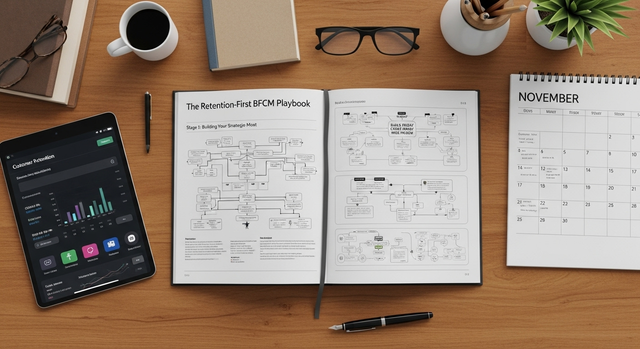
This three-stage playbook reframes BFCM as a core business initiative, not just a marketing campaign.
Stage 1: Building Your Strategic Moat (4-6 Weeks Out)
- Grant VIP Early Access: Reward your best customers, generate early, high-margin revenue, and reinforce the exclusivity of your brand. This is your primary defense against the noise and margin erosion of the BFCM weekend.
- Launch Points-Boosting your audience for engagement by allowing them to earn points for non-transactional activities, building up their balances for BFCM redemption.
Stage 2: Executing with Precision and Personalization (During BFCM)
- Incentivize Social Sharing: Turn customers into advocates by rewarding them for sharing their purchases on social media. This generates authentic user-generated content and high-trust referrals.
- Use Smart Redemption at Checkout: Integrate your loyalty program's redemption options directly into the cart. Reminding a customer, "You have $15 available!" is a powerful, experience-enhancing conversion lever.
Stage 3: Capitalizing on Your Investment (Immediately After)
- Onboard New Members Immediately: Enroll new members after loyalty program with CM shoppers in the loyalty program with a compelling "Welcome to the Club" campaign that outlines their new perks and status.
- Launch Exclusive Member Drops: In the following weeks, release a new product exclusively and launch a new collection for loyalty members. Team members to drive tangible purchases and demonstrate value.
- Activate Your Referral Program: Turn your newly acquired customers into a growth engine by incentivizing them to refer friends. This transforms a one-time acquisition cost into a sustainable, customer-driven acquisition channel.
The Path Forward: From a Four-Day Event to a Year-Round Growth Engine
The 87% failure rate during BFCM is a choice, not an inevitability. It is the outcome of an outdated strategy that prioritizes fleeting transactions over lasting relationships. Those who thrive are those who use BFCM as a strategic opportunity to build their community and invest in retention. They measure success not by short-term revenue spikes, but by long-term growth in repeat purchase rates and Customer Lifetime Value.
By shifting your focus from the costly pursuit of one-time buyers to the profitable cultivation of brand advocates, you can transform BFCM from a high-stakes gamble into a foundational pillar for sustainable, year-round growth.
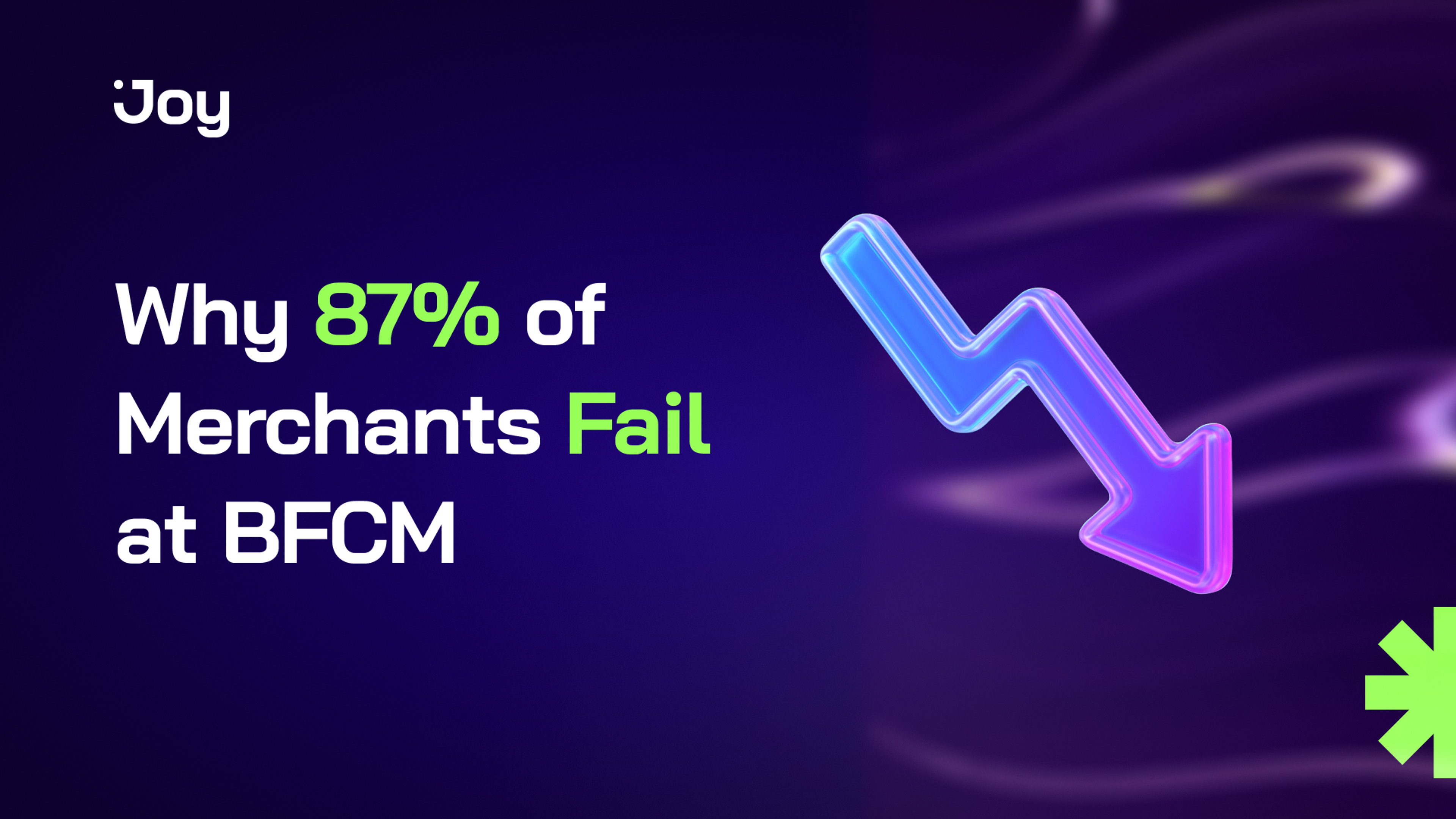

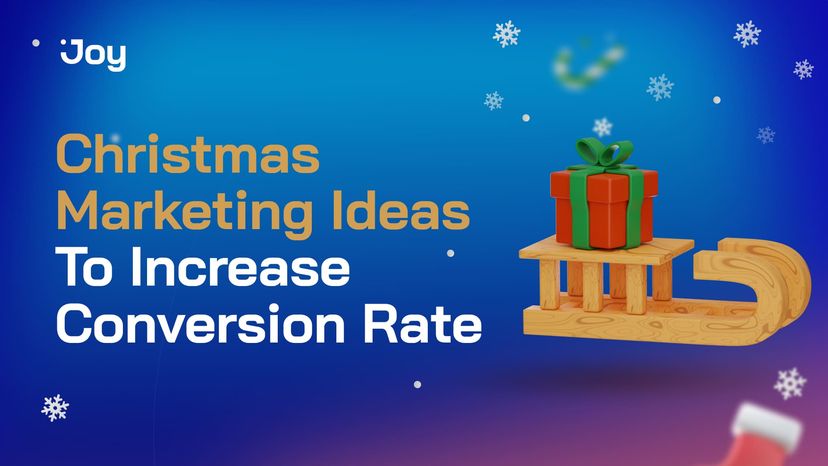

-a7e9a3.png?width=828&q=75&f=webp&auto=format)